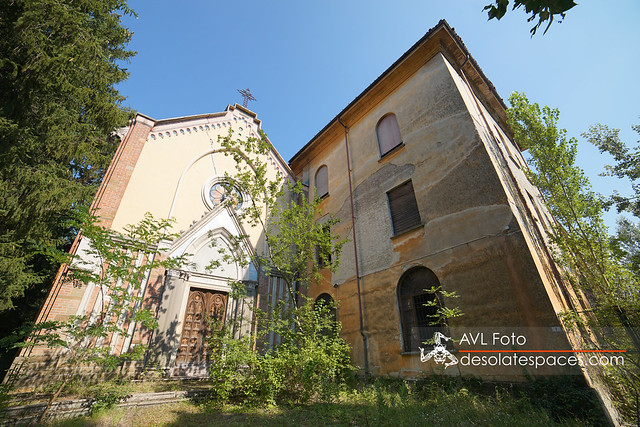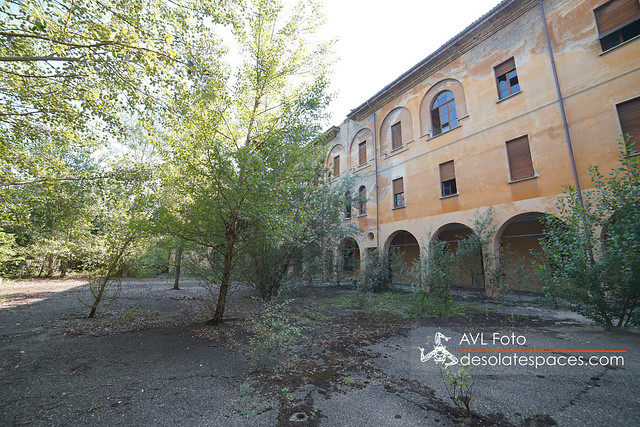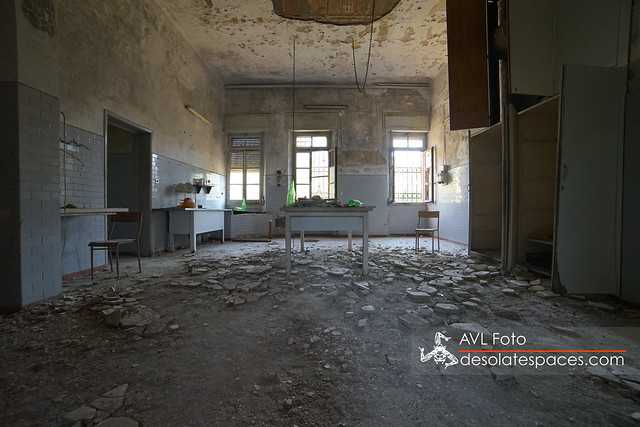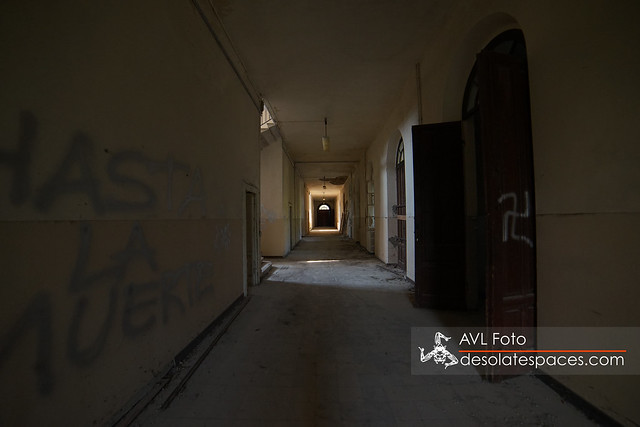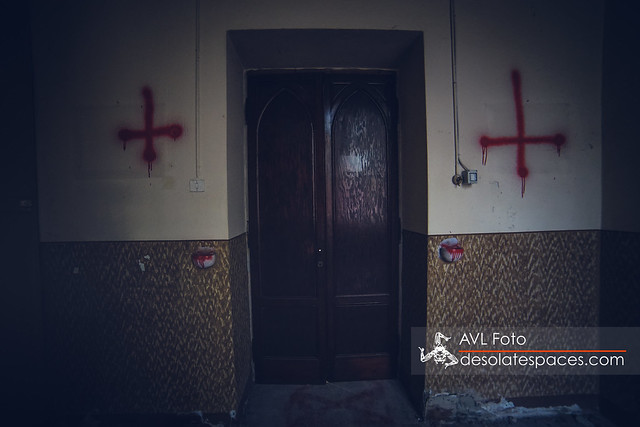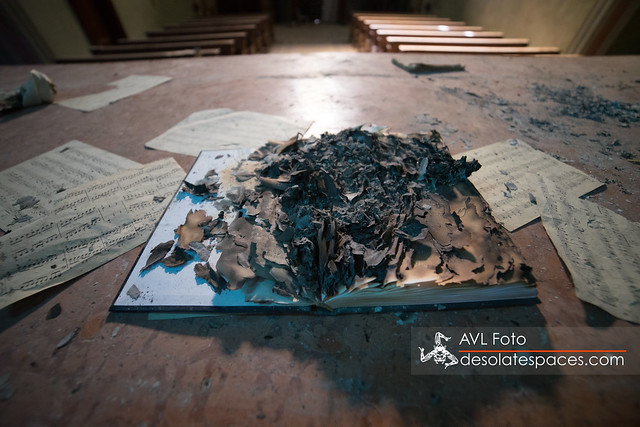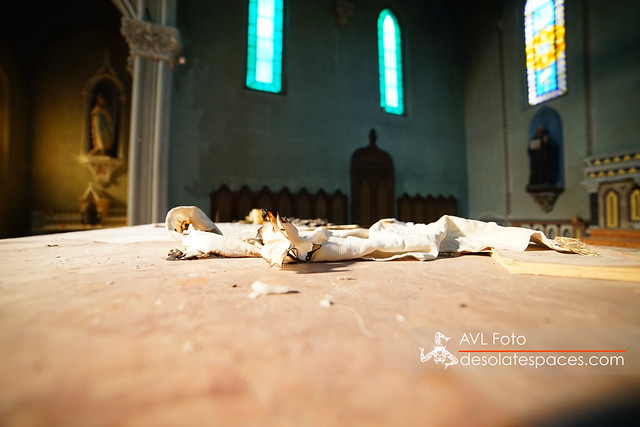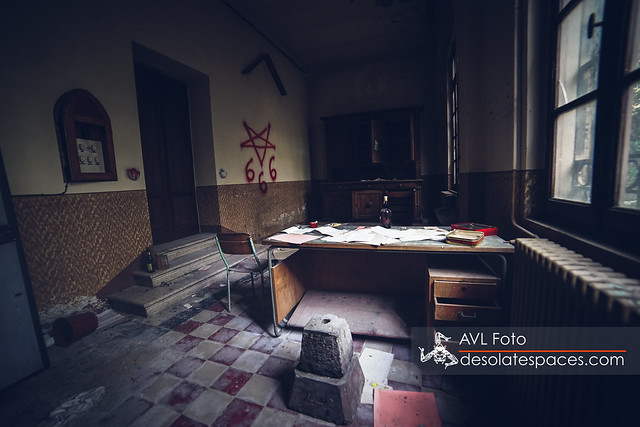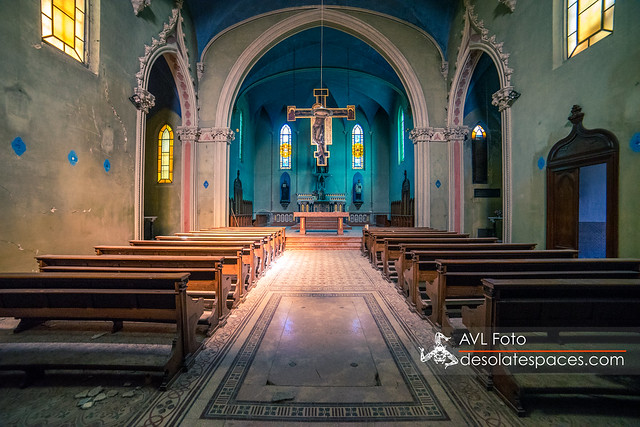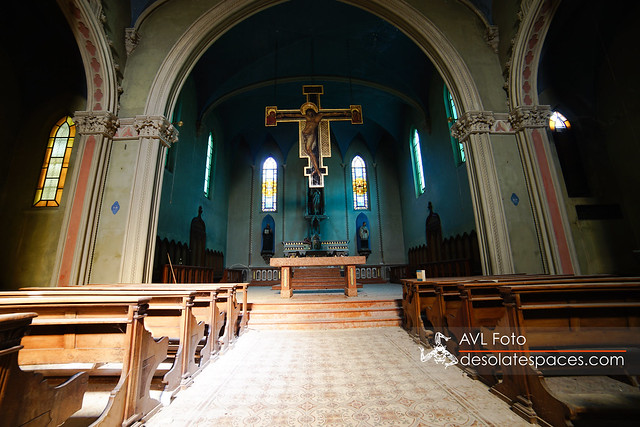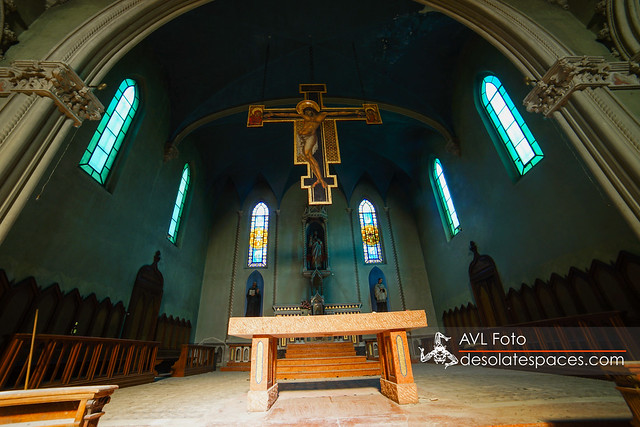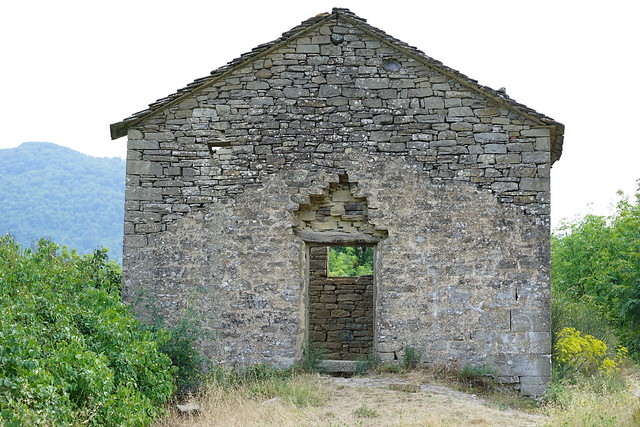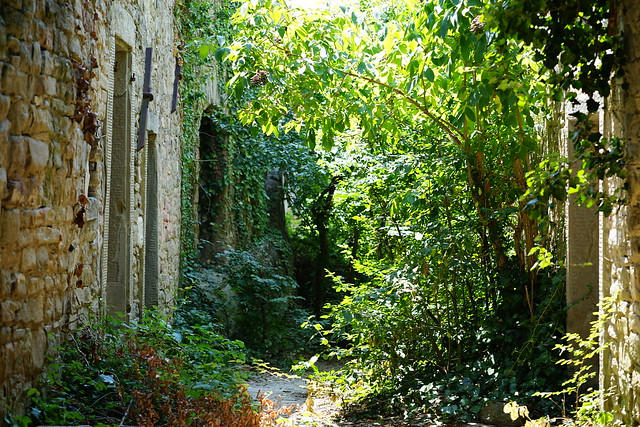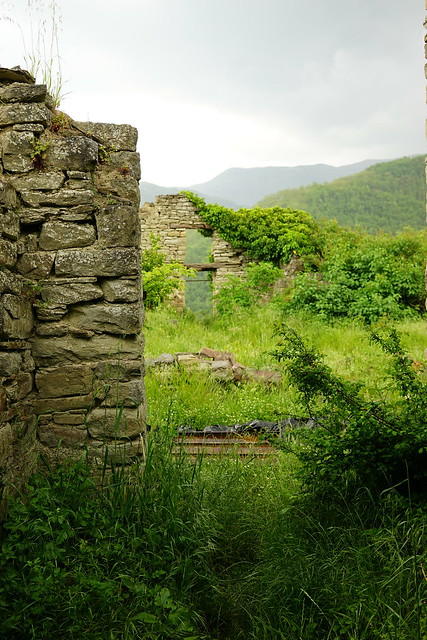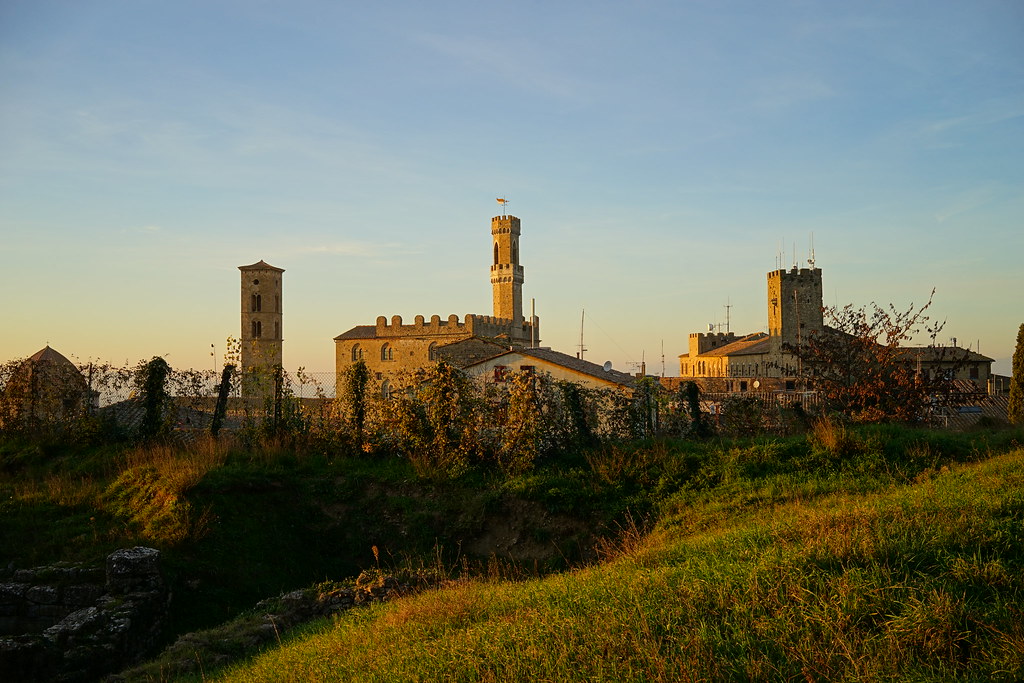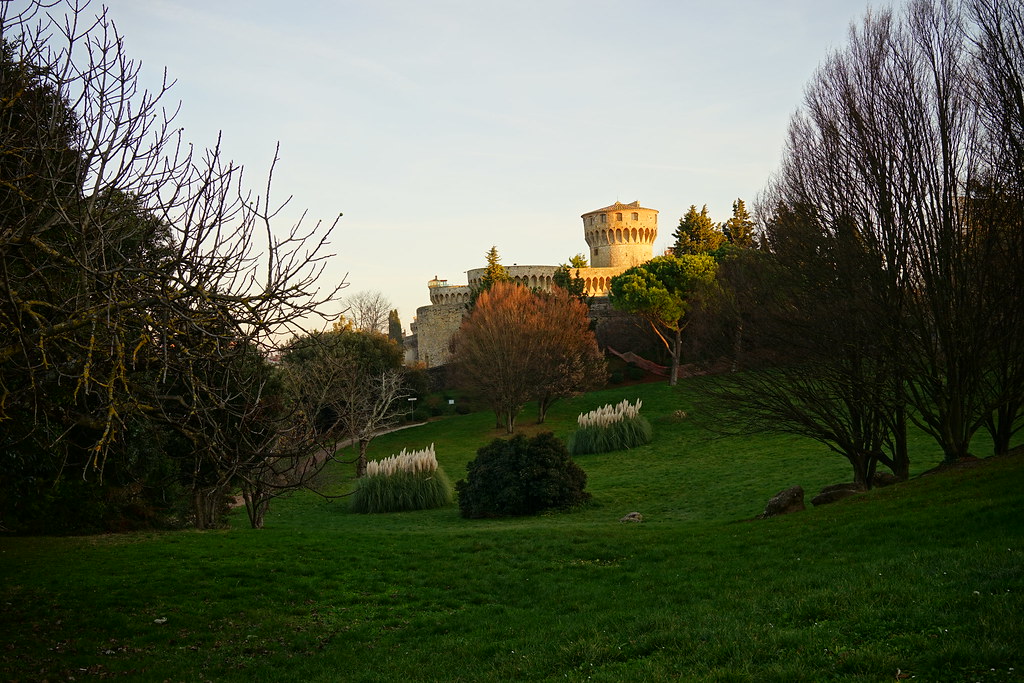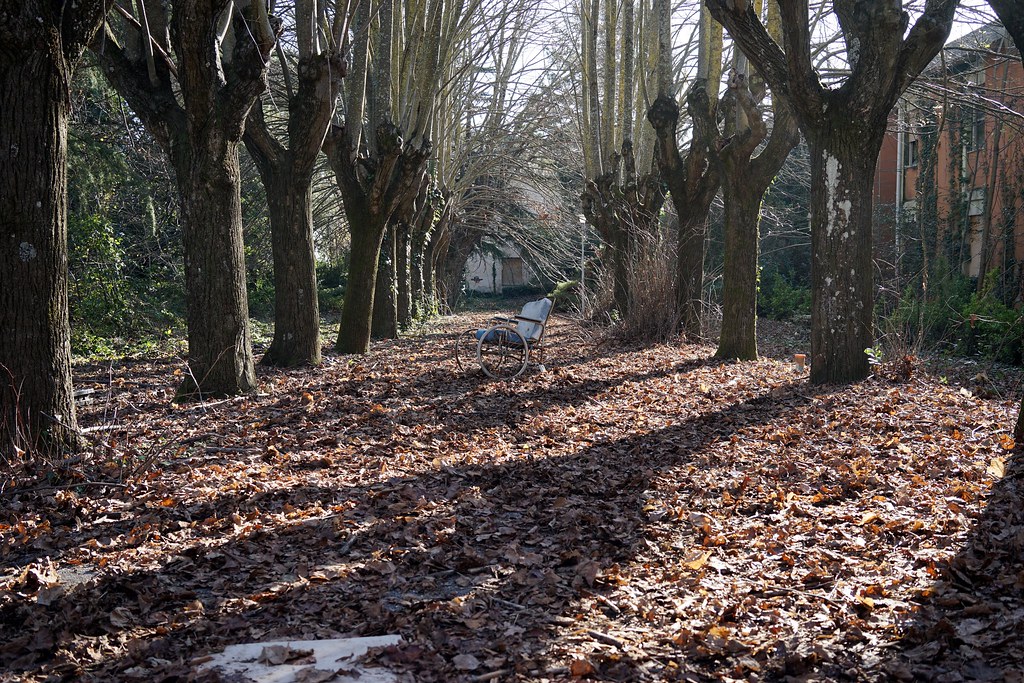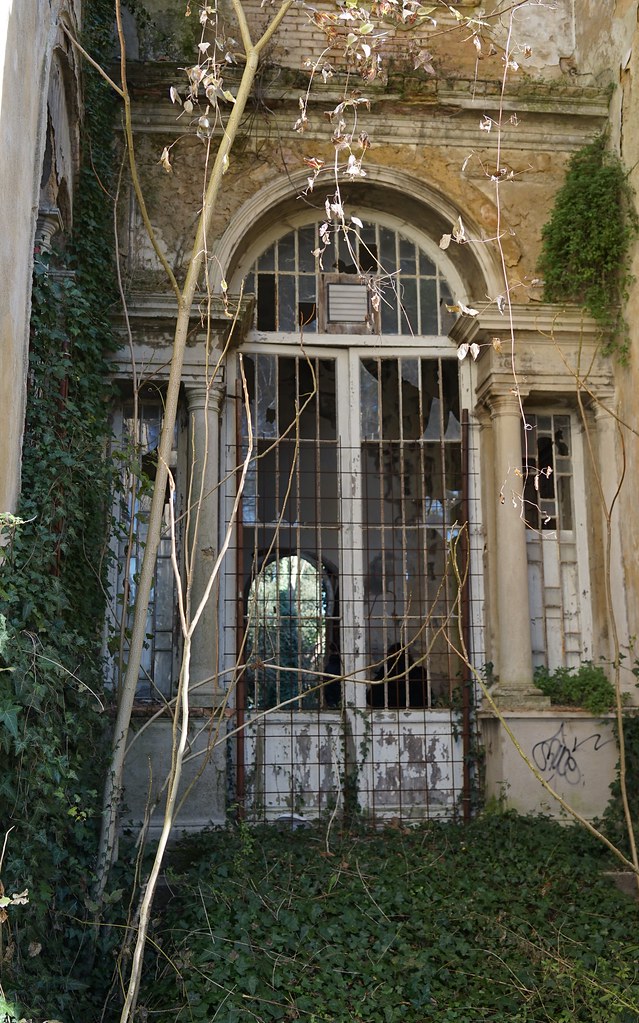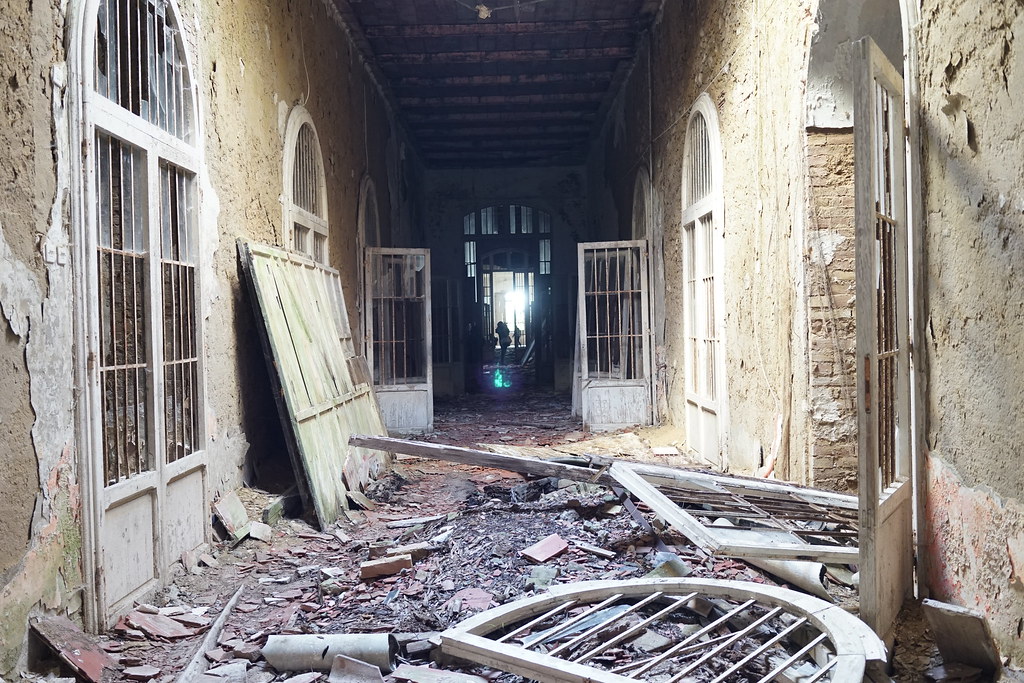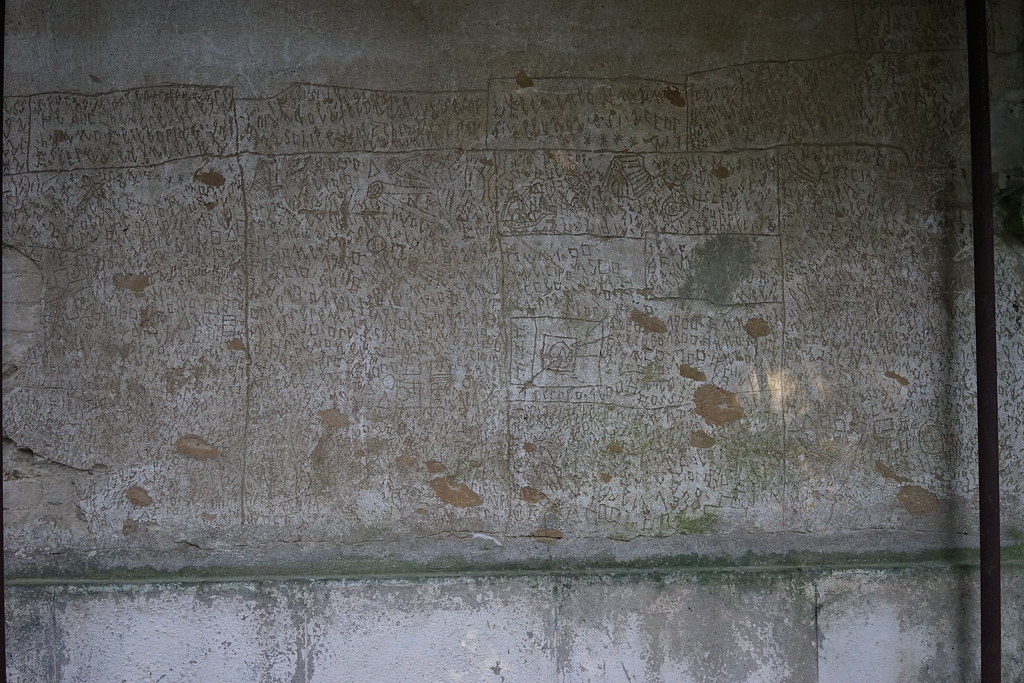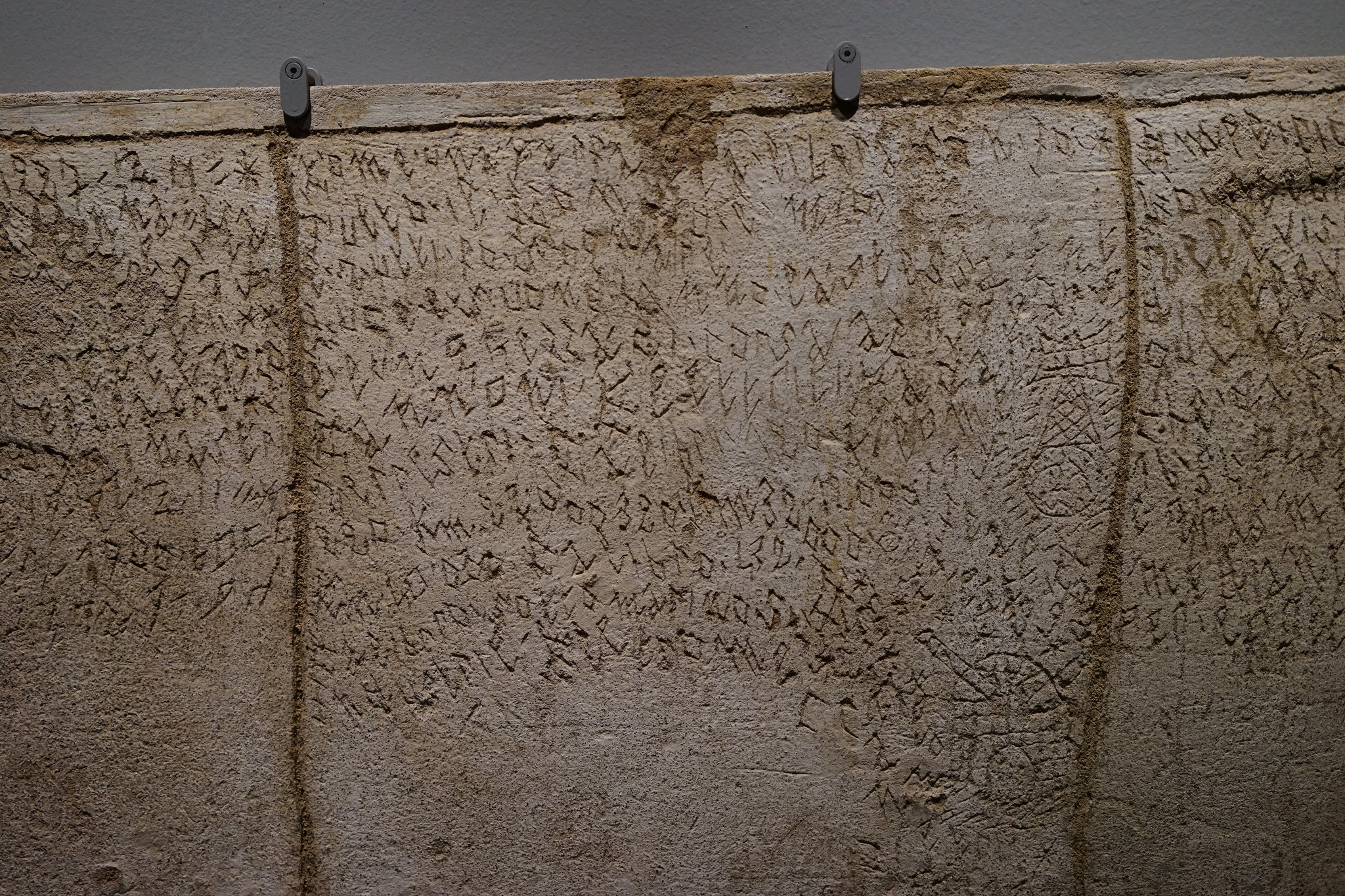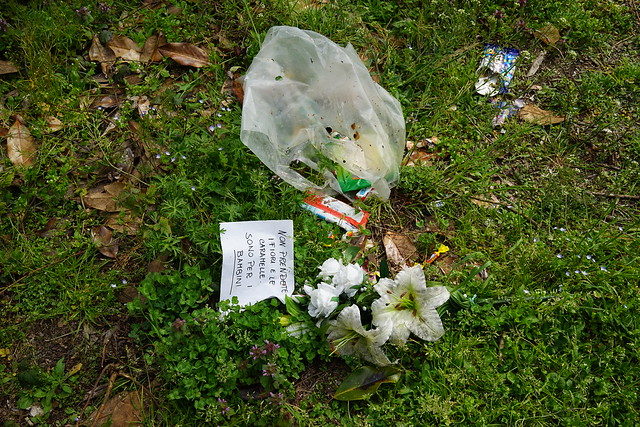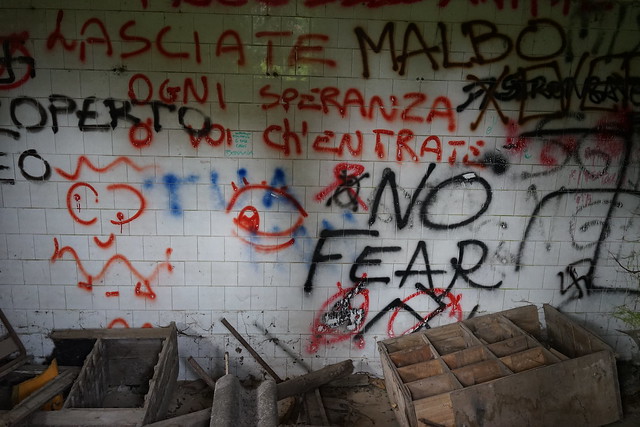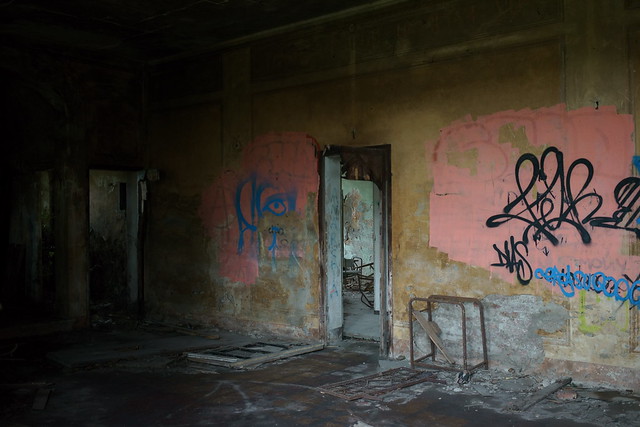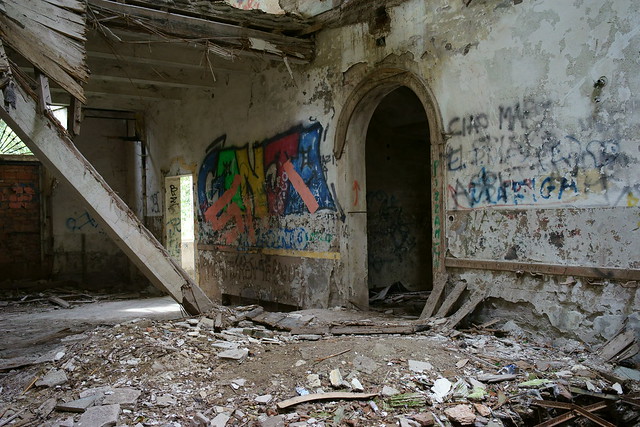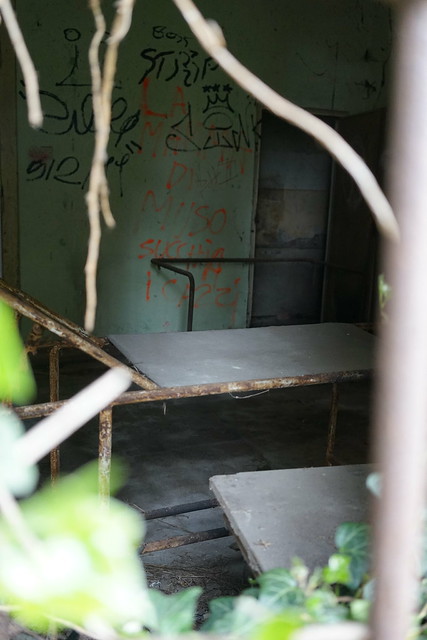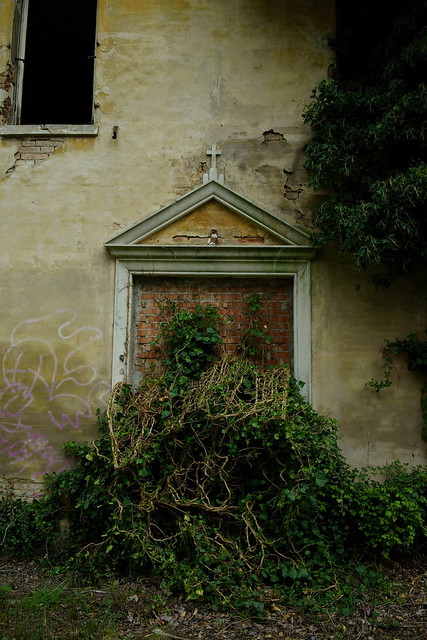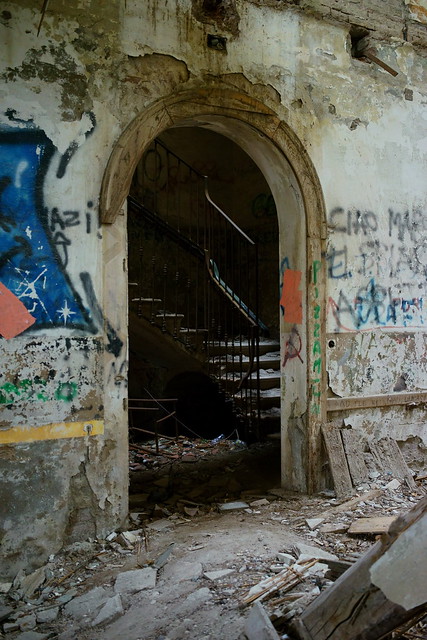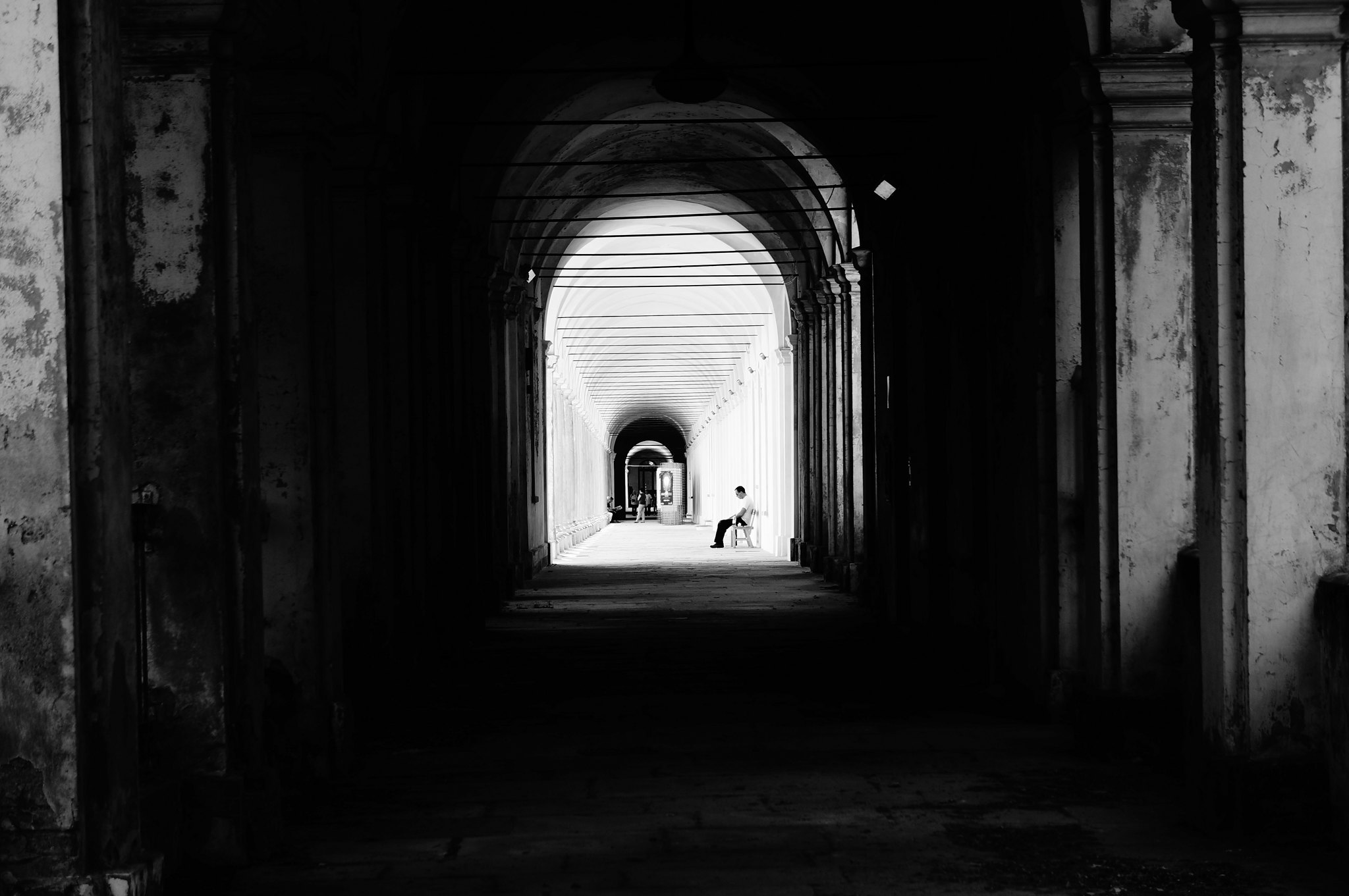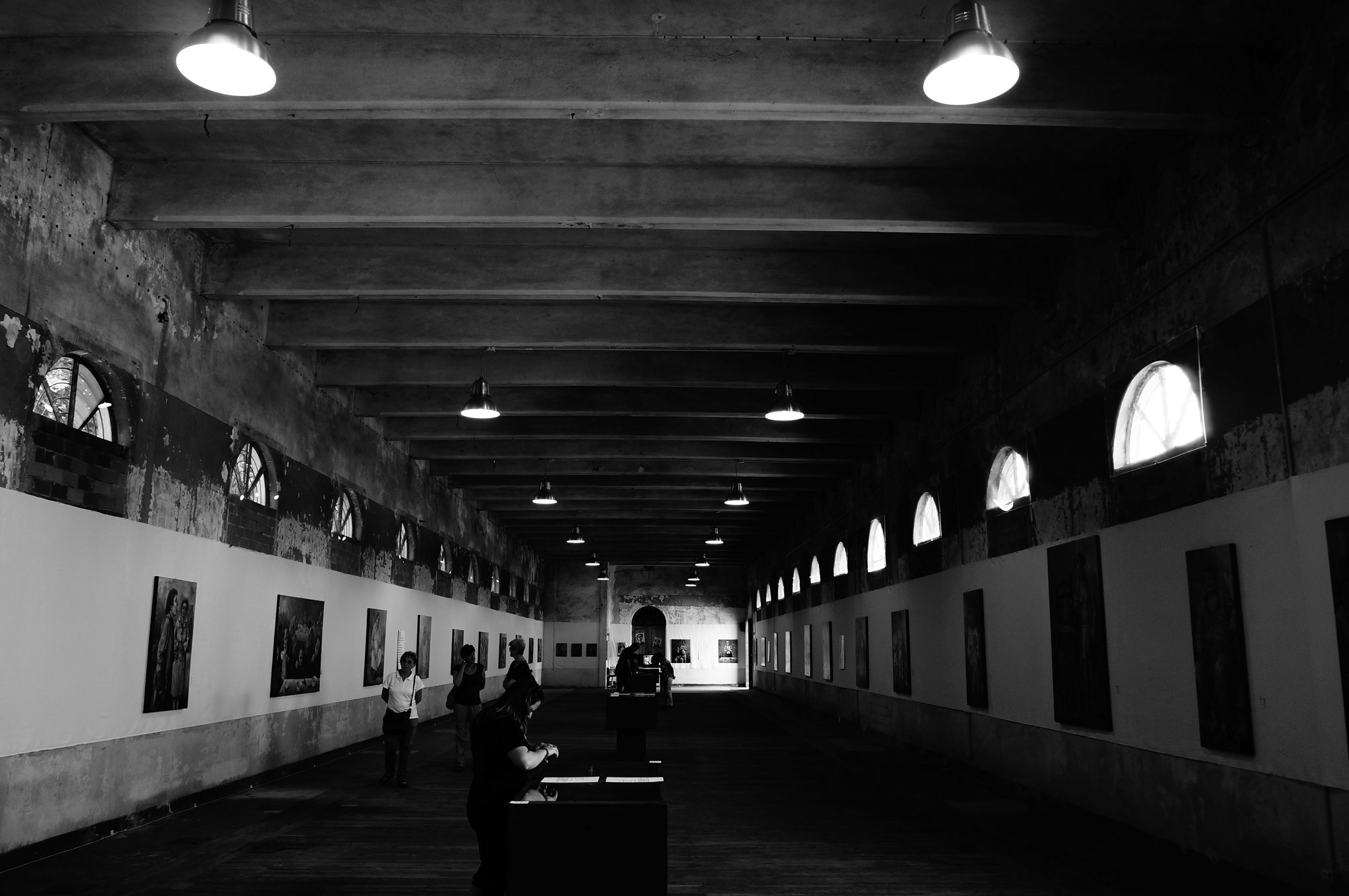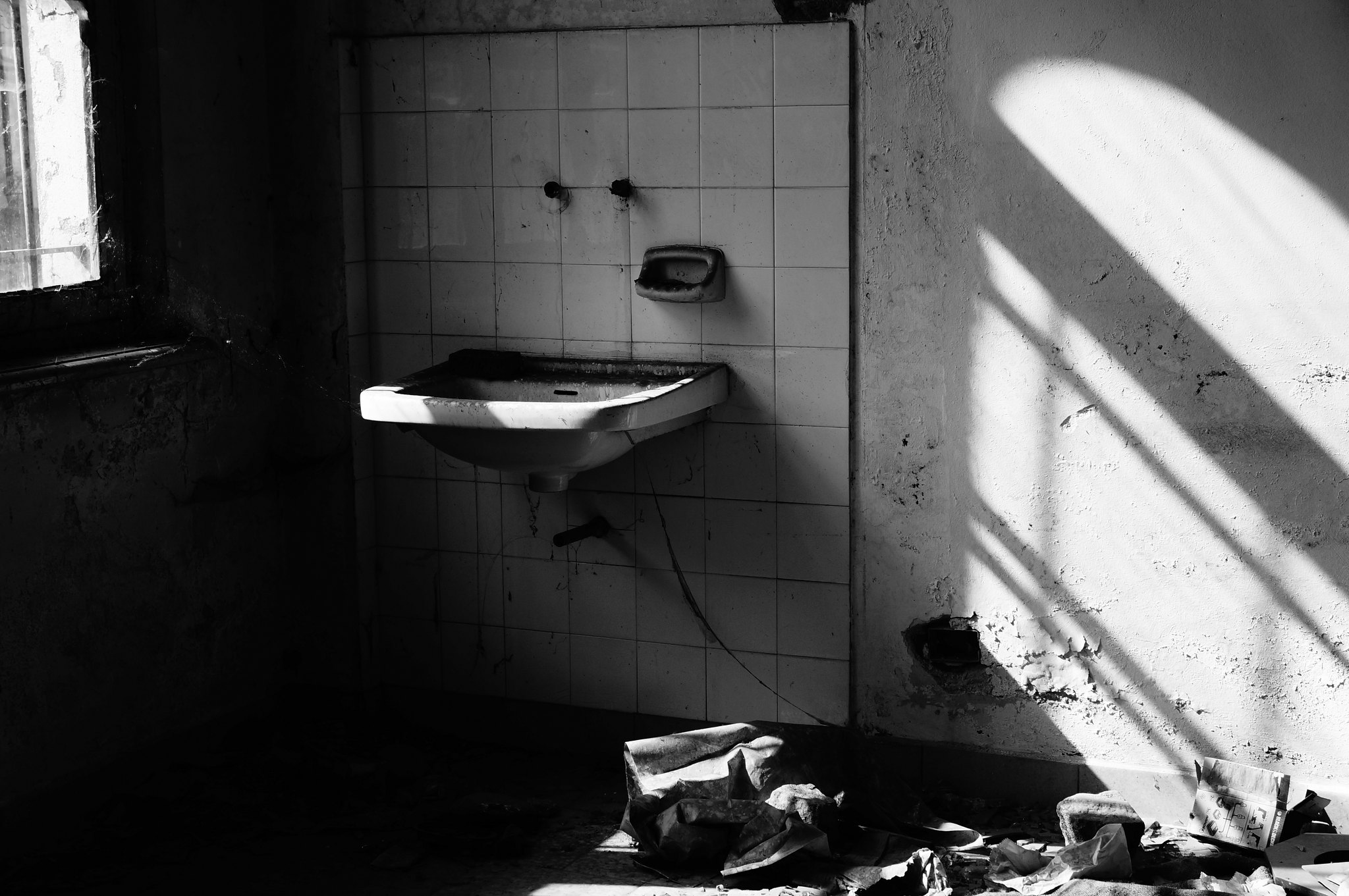13 Gennaio 2019
Prima uscita dell’anno insieme ai Cacciatori dell’abbandono ad alle Urbex Angels! Visitate i loro profili instagram 😉
La Villa del Dottore direi che sia abbastanza famosa soprattutto per il suo divano circolare di colore verde, nonché per “l’eccentrica” sala che lo contiene. L’edificio è situato nelle campagna modenesi circondata da campi agricoli ed è abbastanza ben conservata, si possono ancora ammirare gli affreschi che compaiono in quasi ogni stanza, scale comprese.
L’unità abitativa è composta da un livello interrato, la cantina, due livelli abitativi, la soffitta ed una piccola torre sul tetto.
Dalle cantine saliamo al piano terra dove troviamo la cucina, un soggiorno e la sala da pranzo.
La villa è piena di vecchie polaroid in bianco e nero sparse un po’ ovunque, forse qualche visitatore prima di me le avrà trovare custodite in qualche baule.
Le foto trovate sul tavolo riprendono la scena di un matrimonio.
Salendo per le scale si accede al piano superiore dove troviamo il famoso divano circolare e le stanze da letto. Da notare i bellissimi affreschi che avvolgono interamente i muri ed i soffitti delle stanze.
Proseguendo verso l’ultimo piano troveremo il solaio
Proseguendo la nostra salita verso la piccola torre sul tetto ci si imbatte in una scritta risalente alla seconda guerra mondiale, precisamente il 12/07/1944 che ci informa che per quasi un mese in questa magione hanno alloggiato 300 soldati tedeschi.
Veniamo al nome della villa: La villa del dottore (impazzito ?). Una cosa è certa: dentro la villa si trovano molte fotografie, soprattutto polaroid, e cartoline da viaggio; non so se il precedente proprietario fosse pazzo ma sicuramente gli piaceva viaggiare e fotografare. Oltre a questo si trovano alcuni medicinali con bellissime etichette, molto distanti da quelle a cui siamo abituati oggi e… delle ossa in soffitta, esatto delle ossa…
Per vedere tutte le altre foto le trovate su Facebook!


